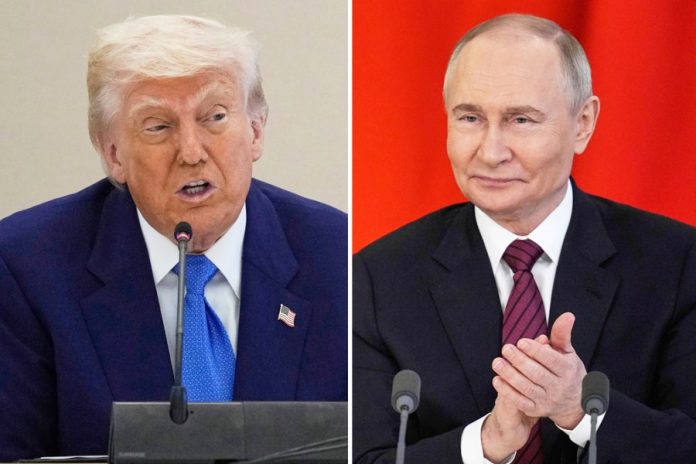
President Trump has become increasingly angry with Russian President Vladimir Putin. For about two months he has been threatening the Kremlin with “secondary” sanctions, which would impose high duties on imports from the nations which continue to purchase Russian energy resources.
The Russians seem unfazed by Trump’s warnings (as well as by Sen. Lindsey Graham’s (R-S.C.) recent remarks), citing their resilience to sanctions. Several authoritative sources argue that the U.S. simply cannot afford to impose even 100 percent duties on China, India or Turkey. If all of Russia’s energy trading partners were subjected to new tariffs, the U.S. would hijack a significant part of its foreign trade and ruin its trade relationships with at least 26 countries.
I agree with those who believe the new tariffs cannot be put in place by Trump’s updated deadline for Russia. We have seen that 125 percent duties on China lasted less than a month, and in recent days, President Trump has announced 50 percent tariffs against Brazil, 25 percent tariffs against India and 15 percent tariffs on the European Union. One hundred percent duties don’t seem plausible. I would urge changing the overall approach to make the tariffs more affordable.
The goal appears to be to cut Russia’s energy supply to the world. Trump’s plan should make Russian oil more expensive to the buyers (by the way, the European “oil price cap” approach has failed. It resulted in discounts for the Russian oil, thus encouraging its smuggling and creation of Russia’s “shadow tanker fleet”).
In this sense, Trump’s position looks more effective — but the major problem lies in the numbers. The predecessor of Trump’s strategy — the bill proposed by Sens. Graham and Richard Blumenthal (D-Conn.) — calls for the duty to be applied to all imports coming to the U.S. from Russia’s energy trading partners. I believe it is too radical and, frankly speaking, not very justified because of the lack of differentiation.
A much better option would be to relate the tariffs to the actual amount of money countries pay to Moscow. For example, India sent $115 billion in its goods and services to the U.S. in 2024 and paid $49 billion for Russian oil that year. China exported $513 billion in goods to the U.S. in 2024 while it bought Russian oil, gas, and coal for up to $76 billion. The EU’s figures stood at $939 billion and $34 billion, correspondingly.
If the U.S. applies 100 percent tariffs linked to the Russian energy resources imported, it would fix additional duties for India this year at 42.6 percent of its exports to U.S., China’s at 14.8 percent and Europe’s at a mere 3.6 percent.
These figures are not so astonishing. On the one hand, they seem manageable, and on the other hand, they still double the price of Russian oil for importing nations.
If this strategy is taken as the principal one, the overall additional duties would equal the entire volume of Russia’s energy exports, $261.9 billion for 2024. As the U.S. combined imports of goods and services amount to $4.11 trillion, the figure makes less than 6.5 percent in additional tariffs. It looks like a fair price for knocking Russia out as self-proclaimed “energy superpower.”
The measure would make Russia’s “shadow fleet” useless, since it doubles the price for Russia’s energy for any country except those with zero exports to the U.S.. But these, if they exist, aren’t significant oil importers that might be helpful to Moscow in substituting the vanishing demand for its oil and gas.
I suggest amending Graham and Blumental’s bill to impose the duty for goods or services imported into the U.S. to an amount that corresponds to each country’s imports of Russian energy resources for the previous year.
It would be a right recipe to destroy the Russian energy exports in two to three years and put Putin’s economy on the brink of collapse without ruining America’s trade ties to its major commercial partners. Should Trump adopt such a plan on Aug. 11, the chances of stopping Russia’s aggression against Ukraine could rise significantly.
Vladislav Inozemtsev is special adviser to the Middle East Media Research Institute’s Russian Media Studies Project and is co-founder and senior fellow at the Center for Analysis and Strategies in Europe.

